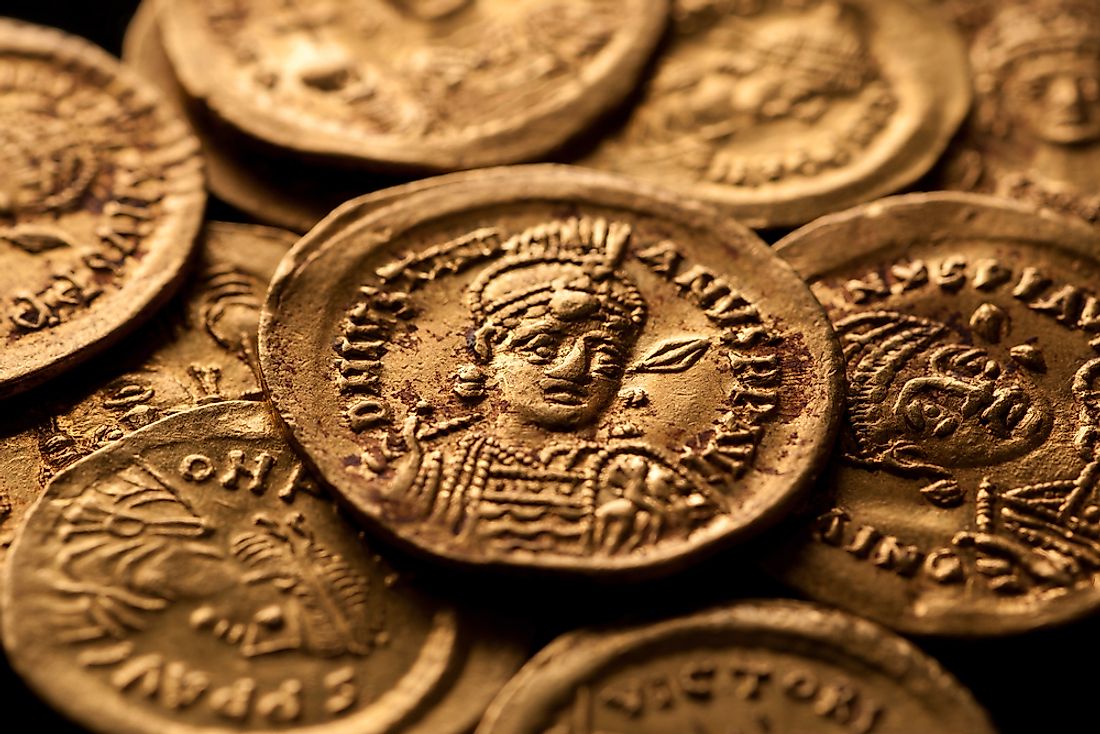The Byzantine Empire: 4th Century AD to 1453

The Byzantine Empire began in 395 AD in Modern Day Istanbul as an extension of the Roman empire. It ushered intellectual civilization and was responsible for the spread of Christianity. Though it imploded from the inside and fell to the Ottoman Turks, the empire's influence was a treasure to Western scholars due to its Greek intellectual influence.
5. Formation
In 330 AD, Emperor Constantine I or Constantine the Great founded a new capital for the Roman Empire on Byzantium, an ancient Greek city that is today Istanbul. Byzantium was near the Black sea and the Mediterranean Sea was renamed Constantinople. In 395 AD, when the Roman Empire was divided in half, the Eastern Roman Empire was based in Constantinople, and the Western Roman Empire in Ravenna, Northern Italy. Constantinople’s location shielded it from attacks. When the Western Roman Empire fell in 476 AD to Flavius Odoacer a German Barbarian’s troops, the surviving Eastern Roman empire, became the Byzantine Empire, with Constantinople as the capital city.
4. Rise To Prominence
The Byzantine Empire began gaining prominence when Constantine rebuilt Byzantium, and renamed the city the New Rome. He assigned a senate and civic officers to administer it similarly to Rome, according to accounts by the Order of Constantine the Great. When Constantine became a Christian, he designated Byzantium as a Christian capital city, where pagan sacrifice was forbidden, although it was common in Rome. As Constantinople was located between Europe and Asia, trade boomed. Merchants from Asia, Africa, and Europe travelled to the city to trade. As a result, the Byzantine Empire became a melting point of all external cultural influences, combined with Roman and Greek cultures. Still Christianity remained the dominant religion as the Byzantine emperor was both the head of the church and the empire.
3. Challenges
In 532 AD in Constantinople, the Byzantine Empire was almost brought down by what is historically known as the Nika Riots. The riots were masterminded by the powerful and diehard fanatics of the Blue and the Greens chariot and horse racing teams. These rival supporters joined to violently protest attempts by the Byzantine Empire, led by Emperor Justinian 1, to execute their two leaders who had been arrested for unrest. The protests were also against high taxes which the emperor intended to impose on citizens. The Green and Blues fans ran wild through Constantinople, and burned and destroyed half the city. They even attempted to crown a new ruler. According to the History Channel, Emperor Justinian 1 almost fled, but was stopped by his wife Theodora who urged him to defend his crown. The emperor ordered Generals Belisarius and Mundus, to crush the riots at all costs. His troops blocked the exits of the city’s Hippodrome where horse and chariot race occurred, and the Blue and Green rioting fans used as headquarters. As a result of the attack on the rioters at the Hippodrome, about 30,000 people died equivalent to 10 percent of Constantinople total population.
2. Demise
After the fall of the Western Roman Empire in 476 AD, the surviving Eastern Roman Empire lasted for 1000 years but fell in 1453, to the Ottoman army. The empire’s demise began when the economy got crippled and new emperors without military experience took over. After Emperor Basil II died in 1025, the Byzantine Empire was strong on all fronts including the military. After his death new rulers took over according to Flow of History. They were without experience or regard for the role of peasants within the empire’s fabric. During famine, the nobles took over peasants’ lands and heavily taxed them. The empire also began to depend on expensive mercenaries instead of their army.
By 1369 the Byzantine Empire was collapsing, and when Emperor John V sought fiscal help from the west to counter the budding Turkish threat, he was imprisoned in Venice due to the empire’s debts. Four year later, the Turks compelled the Byzantine Empire to be subject to their sultan. When Murad II became Turkey’s sultan in 1421, he revoked all privileges accorded to the Byzantine Empire then overseen by Emperor John V’s successors. He laid a siege to Constantinople city and his successor Mehmed II, launched a final attack on the city on May 29th 1453. The last reigning Byzantine emperor Constantine XI Palaiologos died that day in battle, and the fall of Byzantine Empire was complete.
1. Legacy In History
During its existence the Byzantine Empire ushered a culture rich in literature, theology, and arts. It influenced western scholarly traditions as Italian renaissance scholars sought Byzantine intellectuals to translate Greek pagan and Christian writings (according to the History Channel). Even after the Byzantine Empire’s demise, its Christian culture was passed to the Orthodox religion which is practiced in Russia, Romania, Bulgaria, Serbia, and Greece today. Christianity was also responsible for the artistic explosion as Byzantine artists constructed stunning religious art in the magnificent church domes, as a devotion to their faith. Some mosaics were made from colored stone or glass with sparkling of silver and gold. In history, Emperor Constantine I is remembered as the first Roman Emperor to embrace Christianity. The emperor also legalized Christianity in the Roman Empire, for the first time.







